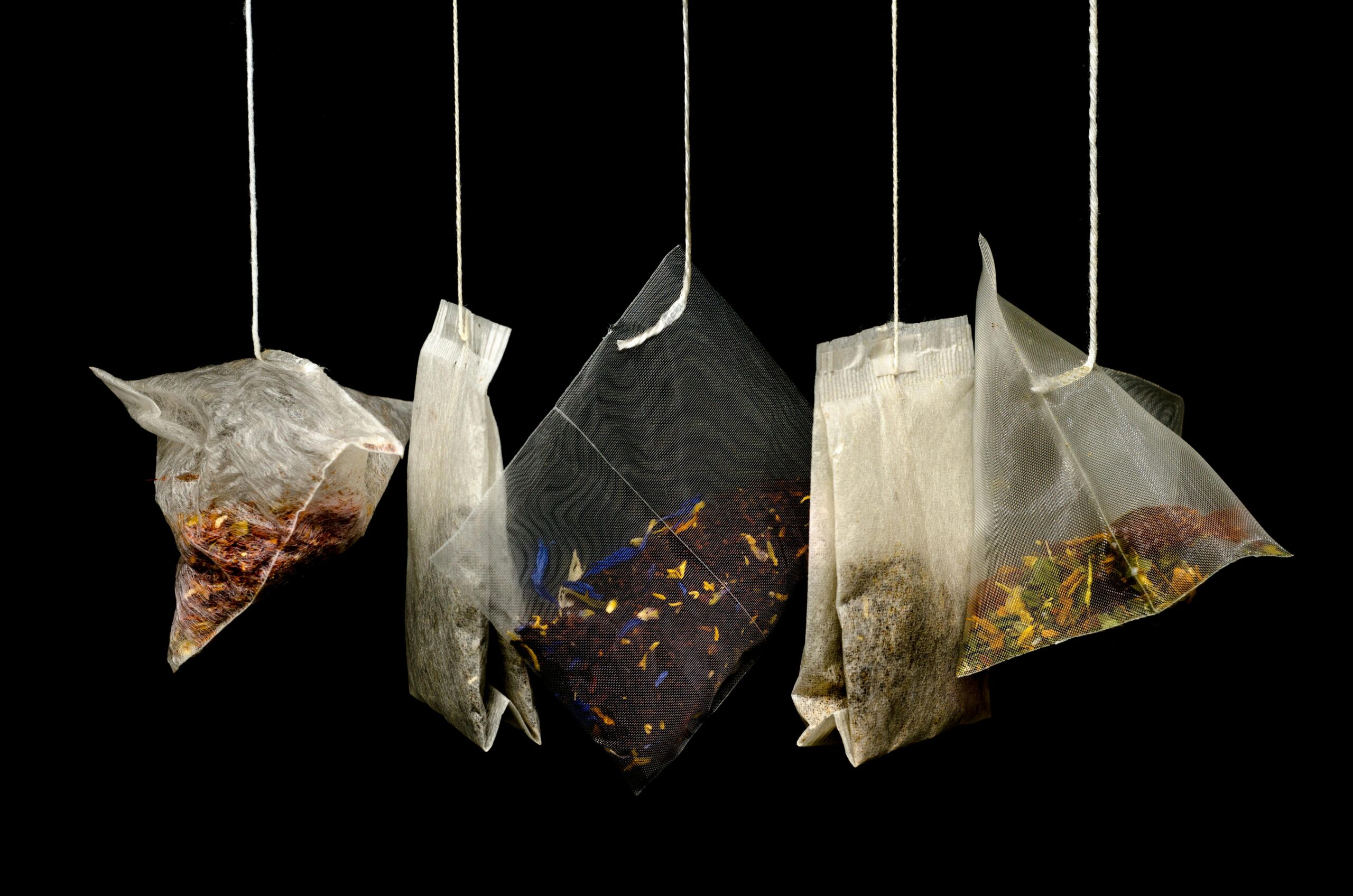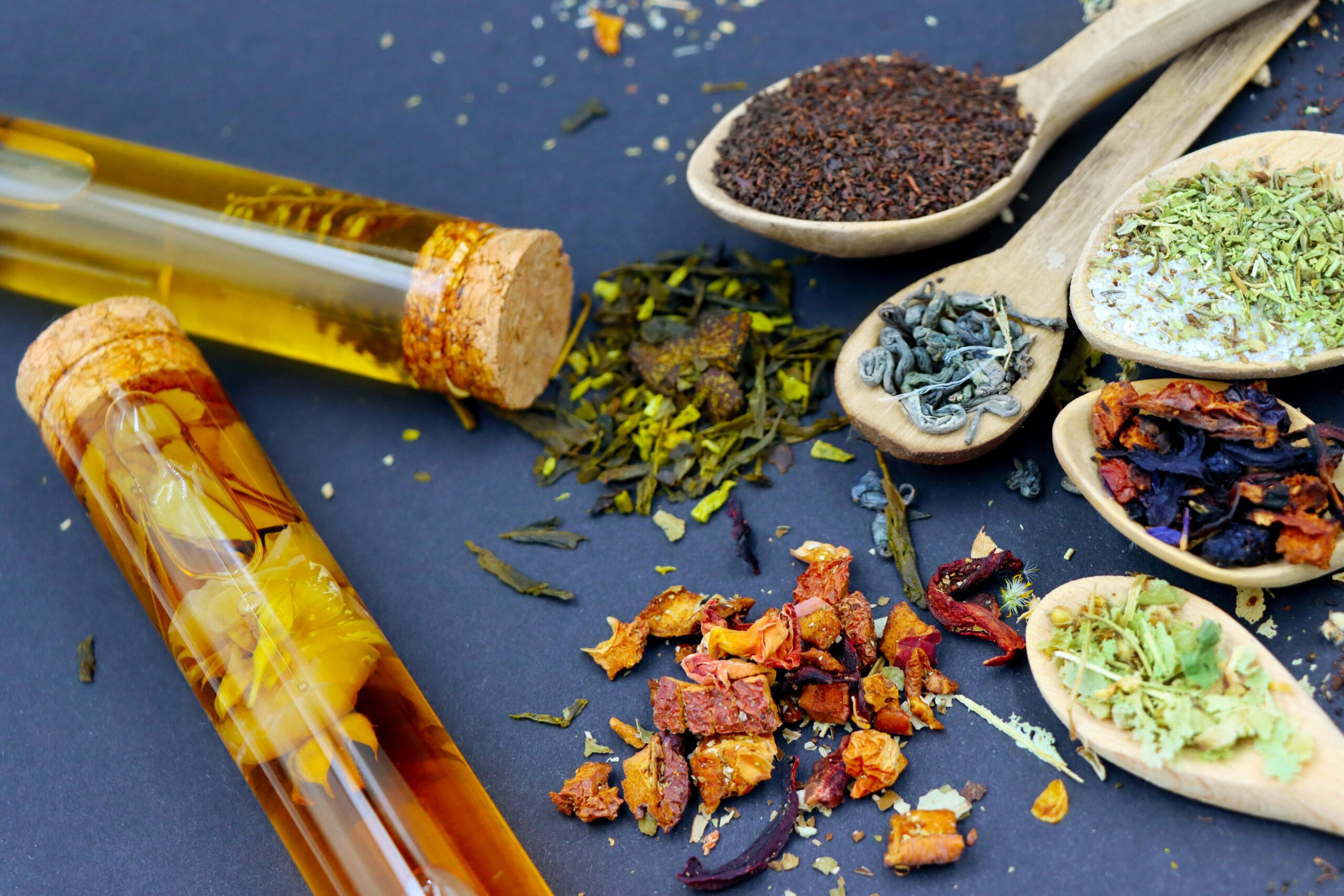Anúncios
Herbal teas have been cherished for centuries, offering warmth, flavor, and a comforting ritual that soothes both body and mind. ☕
From ancient civilizations to modern wellness enthusiasts, people have turned to herbal infusions for their unique flavors and traditional uses. Whether you’re seeking a calming evening beverage or an energizing morning ritual, the world of herbal teas offers endless possibilities to explore.
Anúncios
In this comprehensive guide, we’ll journey through the fascinating realm of herbal teas, discovering popular varieties, brewing techniques, and how to incorporate these delightful beverages into your daily routine. Let’s steep ourselves in knowledge and flavor! 🌿
What Makes Herbal Teas Special?
Unlike traditional teas derived from the Camellia sinensis plant, herbal teas—also known as tisanes—are crafted from dried flowers, leaves, roots, seeds, or fruits of various plants. This distinction means they’re naturally caffeine-free, making them perfect for any time of day.
Anúncios
The beauty of herbal teas lies in their diversity. Each plant brings its own unique flavor profile, aroma, and traditional uses. From floral and sweet to earthy and spicy, there’s a herbal tea to match every preference and occasion.
People have been brewing these botanical beverages for thousands of years across different cultures. Ancient Egyptians enjoyed chamomile infusions, while traditional Chinese medicine has long incorporated various herbal blends into wellness practices.
Popular Herbal Tea Varieties Worth Trying
Chamomile: The Calming Classic
Chamomile tea, made from dried chamomile flowers, is perhaps one of the most recognizable herbal teas worldwide. Its gentle apple-like flavor and golden color make it a favorite evening beverage. The tiny daisy-like flowers create a naturally sweet infusion that requires no additional sweetener.
This tea has been a bedtime companion for generations, often enjoyed as part of a relaxing nighttime routine. Its mild, pleasant taste makes it accessible even to those new to herbal teas. 🌼
Peppermint: Fresh and Invigorating
Peppermint tea delivers a cool, refreshing experience with every sip. Made from peppermint leaves, this naturally sweet and minty brew is wonderfully versatile—enjoyable both hot and iced.
The menthol compounds in peppermint create that characteristic cooling sensation that tingles on your palate. Many people reach for peppermint tea after meals, finding its fresh flavor particularly satisfying.
Ginger: Spicy and Warming
Ginger tea brings warmth and spice to your cup. Made from fresh or dried ginger root, this tea has a distinctive pungent, slightly peppery flavor that awakens the senses.
This root has been valued in traditional medicine systems across Asia for millennia. Today, ginger tea remains popular, especially during colder months when its warming properties are particularly welcome.
Rooibos: The Red Bush Wonder
Originating from South Africa, rooibos (pronounced “roy-boss”) comes from the Aspalathus linearis plant. This naturally sweet, slightly nutty tea has a beautiful reddish-brown color and smooth flavor.
Rooibos contains no caffeine and has a naturally sweet taste, making it perfect for those looking to reduce sugar intake. It’s robust enough to handle milk and sweeteners, yet delicious on its own.
Hibiscus: Tart and Vibrant
Hibiscus tea, made from dried hibiscus flowers, creates a stunning ruby-red infusion with a tart, cranberry-like flavor. This visually striking tea is as beautiful as it is flavorful.
Popular in many cultures—from Egyptian karkade to Mexican agua de jamaica—hibiscus tea can be enjoyed hot or cold. Its tangy profile makes it wonderfully refreshing when served over ice with a touch of honey. 🌺
Lavender: Floral Elegance
Lavender tea offers a distinctly floral, slightly sweet flavor that transports you to a sunny Mediterranean garden. Made from dried lavender buds, this purple-hued tea is beloved for its aromatic qualities.
The key with lavender is moderation—a little goes a long way. When brewed properly, it creates a sophisticated, perfumed cup that’s perfect for afternoon tea time.
Mastering the Art of Brewing Herbal Tea
Brewing the perfect cup of herbal tea is both an art and a science. While it’s more forgiving than brewing traditional teas, following a few guidelines ensures you extract the best flavor from your herbs.
Water Temperature Matters
Most herbal teas benefit from water that has just reached boiling point—around 212°F (100°C). Unlike green or white teas, herbal infusions aren’t damaged by high temperatures. In fact, boiling water helps extract the full spectrum of flavors and beneficial compounds from tougher plant materials like roots and bark.
Steeping Time Guidelines
The steeping time varies depending on what you’re brewing:
- Delicate flowers and leaves: 5-7 minutes (chamomile, lavender, mint)
- Roots and bark: 10-15 minutes (ginger, licorice root)
- Seeds and berries: 8-10 minutes (fennel, rosehips)
- Blends: Follow package directions, usually 5-10 minutes
Unlike traditional tea, herbal teas rarely become bitter with extended steeping, so feel free to leave your infusion a bit longer if you prefer a stronger flavor.
Proper Tea Proportions
A general rule is to use one teaspoon of dried herbs per cup of water, though this can vary based on the density and potency of the herbs. Bulky herbs like chamomile flowers require more volume than dense materials like dried ginger.
Don’t be afraid to experiment and adjust quantities to suit your taste preferences. Keeping notes on your favorite combinations helps you recreate perfect cups consistently. 📝
Creating Your Own Herbal Tea Blends
One of the most enjoyable aspects of herbal tea is the ability to create custom blends tailored to your taste preferences. Mixing different herbs allows you to craft unique flavor profiles and combine the properties of multiple plants.
Basic Blending Principles
Successful tea blending involves balancing different flavor components:
- Base: The primary flavor (50-60% of blend) – examples include rooibos, chamomile, or peppermint
- Supporting flavors: Complementary herbs (30-40%) that add depth
- Accent notes: Small amounts (5-10%) of potent herbs like lavender or rose petals for complexity
Beginner-Friendly Blend Ideas
Relaxing Evening Blend: Combine 3 parts chamomile, 1 part lavender, and 1 part lemon balm for a soothing nighttime tea.
Digestive Comfort Blend: Mix 2 parts peppermint, 2 parts ginger, and 1 part fennel seeds for a after-dinner tea.
Refreshing Summer Blend: Blend 3 parts hibiscus, 2 parts peppermint, and 1 part lemongrass for a vibrant iced tea.
Cozy Winter Warmer: Combine 3 parts rooibos, 1 part cinnamon chips, 1 part orange peel, and a pinch of cloves for a spicy seasonal favorite. 🍂
Health Considerations and Traditional Uses
Throughout history, different cultures have attributed various properties to herbal teas. While modern science continues to study these traditional uses, it’s important to approach herbal teas as enjoyable beverages rather than medicine.
Many people incorporate herbal teas into their wellness routines as part of a healthy lifestyle. Chamomile tea often accompanies bedtime rituals, while ginger tea might be sipped during cold winter months.
If you’re pregnant, nursing, taking medications, or have specific health conditions, it’s wise to consult with healthcare professionals before regularly consuming certain herbal teas. Some herbs can interact with medications or may not be appropriate during pregnancy.
Sourcing Quality Herbal Teas
The quality of your herbal tea significantly impacts both flavor and overall experience. Here’s what to look for when purchasing herbal teas:
Freshness Indicators
Quality dried herbs should be vibrant in color, not faded or dusty. Aromatic herbs like peppermint and lavender should release their scent when you open the package. If herbs look dull or smell musty, they’re likely past their prime.
Purchase in smaller quantities if possible, as herbs lose potency over time. Most dried herbs maintain optimal flavor for six months to a year when stored properly.
Organic vs. Conventional
Organic herbal teas ensure you’re not consuming pesticide residues along with your beverage. Since you’re infusing the entire plant material, any chemicals used during cultivation end up in your cup.
While organic options may cost more, many tea enthusiasts find the investment worthwhile for both flavor purity and peace of mind. 🌱
Loose Leaf vs. Tea Bags
Loose leaf herbal teas typically offer superior flavor and quality compared to tea bags. You can see exactly what you’re buying, and the larger leaf particles retain more essential oils and flavor compounds.
However, tea bags offer convenience, especially for on-the-go brewing. If choosing bagged teas, look for brands using pyramid-shaped sachets or larger bags that allow herbs room to expand and infuse properly.
Storing Your Herbal Tea Collection
Proper storage preserves the flavor, aroma, and quality of your herbal teas. Follow these guidelines to keep your collection fresh:
Store herbs in airtight containers away from light, heat, and moisture. Glass jars with tight-fitting lids work wonderfully, as do tin containers. Avoid plastic when possible, as it can impart flavors over time.
Keep your tea storage in a cool, dark cupboard—not above the stove or near a sunny window. Temperature fluctuations and light exposure degrade herbs quickly.
Label containers with the herb name and purchase date. This helps you use older herbs first and track freshness.
Herbal Tea Rituals Around the World
Different cultures have developed unique traditions around herbal tea preparation and consumption, each reflecting local plants, customs, and values.
Moroccan Mint Tea Ceremony
In Morocco, mint tea (made with green tea and fresh mint leaves) represents hospitality and friendship. The elaborate pouring technique, where tea is poured from a height to create foam, turns tea service into a performance art.
South American Mate Tradition
While technically from the yerba mate plant, this herbal beverage holds deep cultural significance in Argentina, Uruguay, and Paraguay. Shared among friends using a special gourd and metal straw, mate drinking is a communal bonding experience.
Egyptian Hibiscus Heritage
In Egypt, bright red karkade (hibiscus tea) has been enjoyed for thousands of years. Often served cold with plenty of sugar, it’s a refreshing beverage particularly popular during hot months and celebrations. 🌍
Incorporating Herbal Teas Into Daily Life
Beyond simply drinking herbal tea, there are creative ways to incorporate these flavorful infusions into your daily routine:
Morning Energy Alternative
If you’re looking to reduce caffeine intake, start your day with an energizing ginger and lemon tea instead of coffee. The spicy warmth provides a gentle wake-up without the jitters.
Afternoon Break Ritual
Replace your afternoon snack with a cup of rooibos or chamomile tea. Taking a proper tea break helps reset your mind and can improve afternoon productivity.
Evening Wind-Down Routine
Create a consistent nighttime ritual by brewing a cup of calming herbal tea about an hour before bed. The warm beverage and quiet moment signal your body it’s time to transition toward sleep.
Iced Tea Hydration
Brew strong herbal tea, chill it, and keep a pitcher in your refrigerator for refreshing hydration throughout the day. This is especially helpful if you find plain water boring. Try hibiscus or mixed berry blends for naturally flavored, caffeine-free refreshment. 🧊
Growing Your Own Tea Garden
Many herbs used for tea are surprisingly easy to grow, even in small spaces. A windowsill herb garden can provide fresh ingredients for your daily cups.
Mint is famously vigorous and grows well in containers (which is recommended, as it can take over gardens). Fresh mint leaves make incomparably aromatic tea—just muddle a few leaves in hot water for instant refreshment.
Chamomile grows easily from seed and produces adorable daisy-like flowers perfect for harvesting and drying. A small patch can provide months of homegrown tea.
Lemon balm, another mint family member, grows enthusiastically and offers a lovely lemon-mint flavor for tea. It’s hardy, forgiving, and perfect for beginner gardeners.
Growing your own tea herbs connects you more deeply with your beverages and provides the freshest possible ingredients. There’s special satisfaction in sipping tea made from plants you nurtured yourself. 🌿
Herbal Tea Accessories to Enhance Your Experience
While you don’t need special equipment to enjoy herbal tea, a few thoughtful accessories can elevate your tea-drinking experience:
Tea infusers: Basket-style infusers that fit into your mug give herbs plenty of room to expand and release their flavors. Avoid tiny ball infusers that cramp the herbs.
Glass teapots: Watching colorful herbs swirl and steep in a clear glass teapot adds visual enjoyment to your tea ritual. They’re also practical—you can see when your tea has reached the perfect strength.
Temperature-control kettle: While herbal teas tolerate boiling water, an electric kettle with temperature settings is useful if you also enjoy traditional teas that require specific temperatures.
Beautiful teacups: Drinking from a lovely cup enhances the sensory experience. Choose cups that feel comfortable in your hand and please your eye.

Embracing the Herbal Tea Lifestyle
Herbal teas offer more than just flavor—they provide moments of pause in our busy lives. The simple act of brewing and savoring a cup creates space for mindfulness and self-care.
Whether you’re drawn to herbal teas for their taste, their traditions, or their role in wellness practices, there’s a whole botanical world waiting to be explored. Each herb tells a story, carries cultural heritage, and offers unique sensory experiences.
Start your herbal tea journey with a few varieties that appeal to you. Experiment with brewing techniques, try creating your own blends, and pay attention to how different teas make you feel. Over time, you’ll develop personal favorites and discover which teas suit different moods and moments.
The beauty of herbal teas lies in their accessibility and diversity. There’s no right or wrong way to enjoy them—whether you prefer a quick tea bag at your desk or an elaborate brewing ritual, what matters is finding joy in the experience.
So fill your kettle, choose your favorite herb, and pour yourself a cup of comfort. In our fast-paced world, taking time for a mindful tea moment is a simple luxury available to everyone. Here’s to many delightful cups ahead! ☕✨





